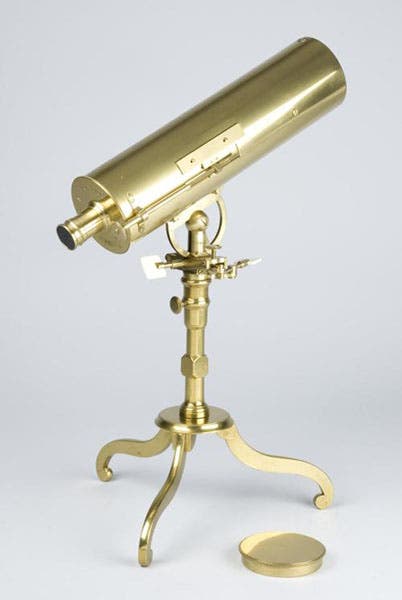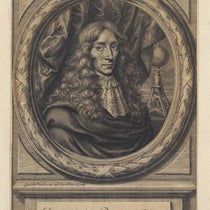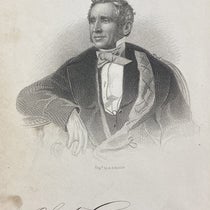Scientist of the Day - John Winthrop
John Winthrop, a colonial American astronomer, was born Dec. 19, 1714. Winthrop was the great-great grandson of the other John Winthrop, the founder of the Massachusetts Bay Colony; our John was the Hollis Professor of Astronomy at Harvard College. Winthrop was just about the only colonial astronomer who generated any respect back in England. He regularly wrote letters to the Royal Society of London on such matters as observing a meteor in New England, or the effects of an earthquake, and as often as not, these letters were printed in the Philosophical Transactions of the Society (second and third images).
A big moment for Winthrop – two big moments, actually – came in April of 1759, when he gave two lectures at Harvard on the comet that had just appeared in the skies. This comet is now known as Comet 1P/Halley, or Comet Halley, or Halley's comet, but at the time it had yet to make its first reappearance since Halley, in 1705, had predicted it would do so. To have a heavenly body return just because Newtonian physics said it should, at the very time predicted 55 years earlier, was quite an exciting occurrence, especially since the prevalent view of comets saw them as miraculous portents sent by God. Winthrop extolled Halley, Newton, and physics in his lectures, and supported the notion that comets are regular members of the solar system and no exception to the laws of nature. His Two Lectures on Comets (1759) is in our History of Science Collection (fourth image).
In 1761, Winthrop played an active role in promoting American participation in observing a transit of Venus across the Sun, another heavenly phenomenon that could be predicted many years in advance. Transits of Venus occur in pairs, 8 years apart, every 110 years or so; the pair that occurred during Winthrop's time were in 1761 and 1769. Halley had called for a world-wide observing program of these two transits, in order to better determine the solar parallax – the difference in the sun’s position when viewed from the center and the surface of the Earth – which yields the distance from the Earth to the Sun. For the June 6, 1761 transit, Winthrop journeyed to Nova Scotia with his telescope and recorded the transit times there. When he returned, he sent his observations to the Royal Society, and his account of his transit expedition was eventually published in the Philosophical Transactions (fifth image).
Combining Winthrop’s observations with the measurements of others, the solar parallax was calculated at 8.42 seconds of arc (sixth image). The modern figure is only slightly larger.
Winthrop posed holding a diagram of the transit of Venus of 1761. Also included in the portrait was Winthrop’s favorite telescope, a small Cassegrain reflector made by James Short of London before 1758. It is only a foot long, so it was no trouble for Winthrop to take it to Nova Scotia to observe the transit of Venus. Surprisingly, the telescope survives; it may be seen in the Harvard Collection of Historical Scientific Instruments, and its gleaming brass is as beautiful as ever (seventh image).
Dr. William B. Ashworth, Jr., Consultant for the History of Science, Linda Hall Library and Associate Professor emeritus, Department of History, University of Missouri-Kansas City. Comments or corrections are welcome; please direct to ashworthw@umkc.edu.












